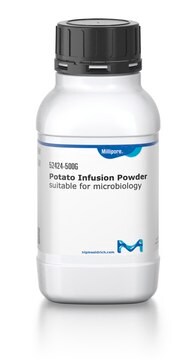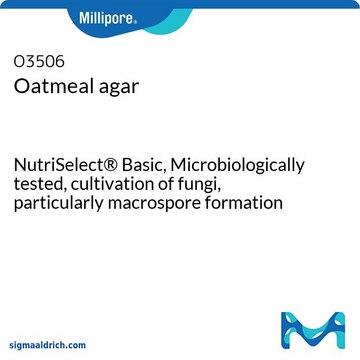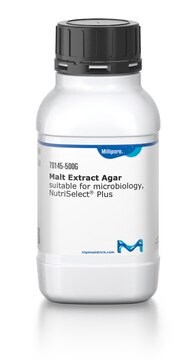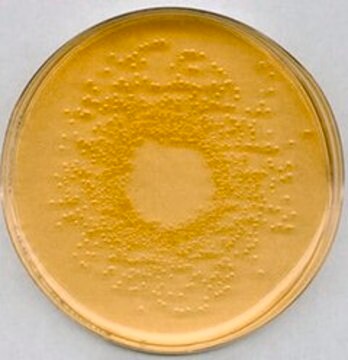P2182
Potato Dextrose Agar
Recommended for the isolation of yeasts and molds, NutriSelect® Basic
Synonym(s):
PDA
About This Item
Recommended Products
biological source
potato
Quality Level
sterility
non-sterile
form
powder
manufacturer/tradename
NutriSelect® Basic
pH
-5.6-25 °C
application(s)
bioburden testing
cosmetics
food and beverages
microbiology
pharmaceutical
sterility testing
storage temp.
10-30°C
suitability
bacteria
molds
yeasts
Related Categories
General description
Application
- The isolation and enumeration of yeasts and molds from food and dairy products
- Stimulating sporulation
- Maintaining stock cultures of fungi
- Differentiating various dermatophytes based on pigment production
Components
Dextrose - 20 g/L
Agar - 15 g/L
Other Notes
Preparation Note
Analysis Note
Footnote
The designations basic, plus, or prime are added to indicate the quality control level, from basic quality control to standard QC plus to prime for full regulatory compliance.
Legal Information
Storage Class Code
11 - Combustible Solids
WGK
WGK 3
Flash Point(F)
Not applicable
Flash Point(C)
Not applicable
Personal Protective Equipment
Regulatory Listings
Regulatory Listings are mainly provided for chemical products. Only limited information can be provided here for non-chemical products. No entry means none of the components are listed. It is the user’s obligation to ensure the safe and legal use of the product.
JAN Code
P2182-250G-PW:
P2182-BULK:
P2182-250G:
P2182-1KG-PW:
P2182-1KG:
P2182-VAR:
Choose from one of the most recent versions:
Already Own This Product?
Find documentation for the products that you have recently purchased in the Document Library.
Customers Also Viewed
Our team of scientists has experience in all areas of research including Life Science, Material Science, Chemical Synthesis, Chromatography, Analytical and many others.
Contact Technical Service








